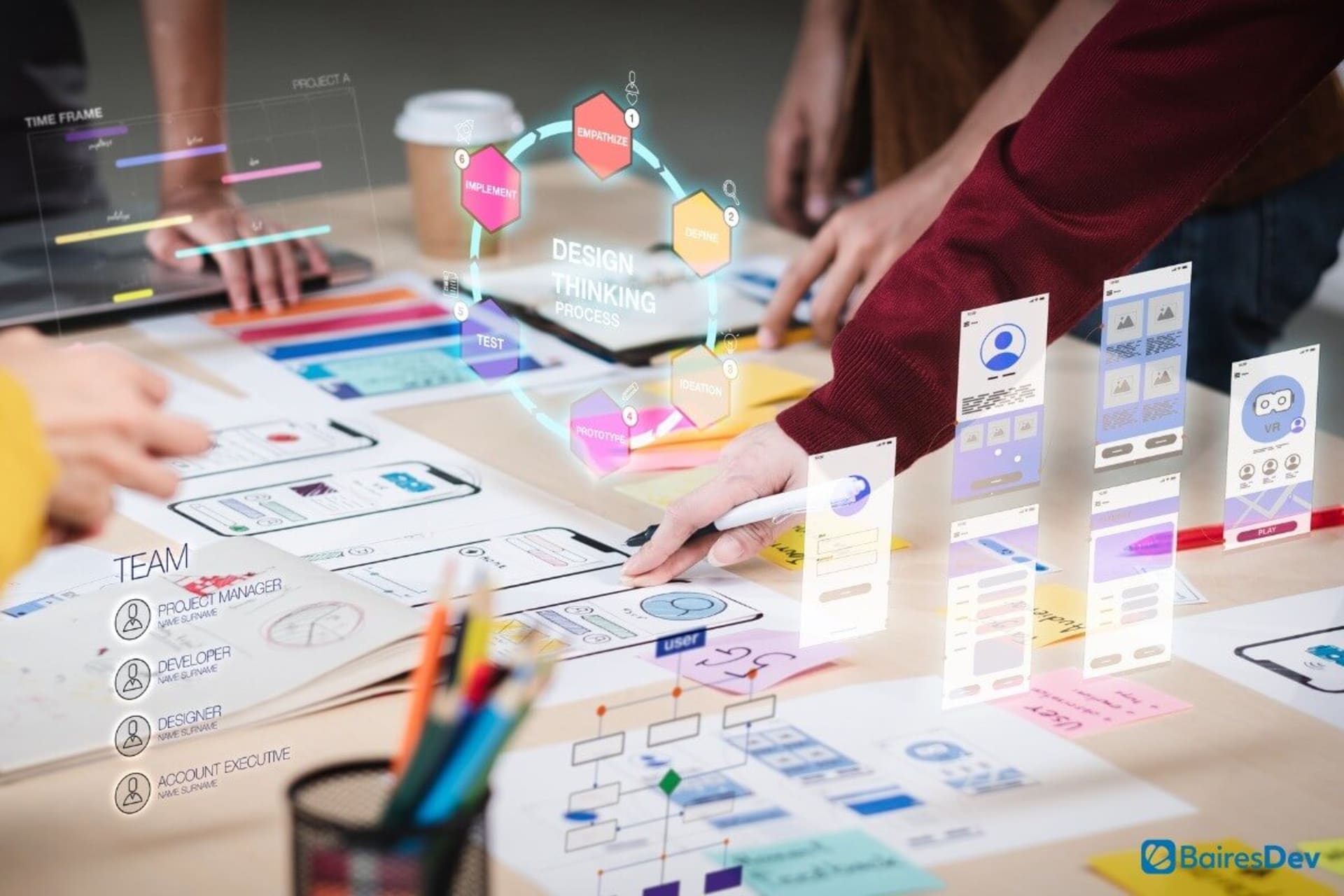The Internet of Things has become a buzzword in recent years. The applications of this network of smart interconnected devices span many different facets of life and business, including automotive, telecom, healthcare, and even mobile app development.
According to a study by Smart Insights, most smartphone users today spend 90% of their on-screen time on mobile apps. This explains why mobile apps continue breaking records in popularity and are also a key factor influencing the rise of the Internet of Things. Mobile app development isn’t only a beneficial option for businesses—it also provides support to all kinds of people from all types of sectors whether through the use of in-house teams or outsourced software development teams.
What Exactly Is the IoT?
The IoT, or the Internet of Things, refers to the network of physical things that are developing at a rapid rate with enhanced, connected technologies. It’s a network of physical objects (the “things”) connected via the internet for the purpose of exchanging data. In other words, the IoT is an ecosystem of web-enabled smart devices ranging from mobile phones and tablets to televisions, refrigerators, cars, microwaves, light bulbs, and other continually evolving products.
Because the IoT features the ability to connect with just about every sensor-enabled device in homes and offices around the globe, it requires minimal human interaction and manual assistance, thus further enriching user experience. Thanks to the improved visibility that the IoT offers, the quality of mobile apps also improved to keep up with their demand for use with “real life” gadgets.
How Is the IoT Shaping Mobile App Development Trends?
By 2023, IoT will have an estimated 1.3 billion projected subscriptions. If this is anything to go by, it indicates the IoT is unquestionably the way of the future of mobile app development. After realizing that the IoT aids greatly in data collection for better decision-making, many businesses are adopting IoT-enabled devices for many of their operations. This has led to a surge in demand for IoT app development.
One major way that the IoT already influenced mobile app development is through design. Prior to the beginning of IoT product implementations and usage, all app developers needed to think about the typical interactions between the user and app. Now, developers find themselves having to consider the user, the physical objects (hardware devices), and the surrounding environment or context for these app relations.
What this means is that developing an IoT-enabled mobile app is now more than just building an app as it was even 10 years ago. It’s now about making the app user-friendly so that the presentation of data from physical objects is visually appealing and easy to understand on all types of physical objects as well.
Two of the most prominent benefits of the IoT for mobile apps are greater interactivity and personalization for both the end users and the companies themselves. This technology allows businesses to gather user-centric data by enabling mobile apps to interact directly with physical objects. This means that they have the ability to control things remotely via mobile devices.
Thus, to improve a user’s experience, it’s vital that the connected mobile apps feature user interfaces that simulate physical things so users don’t have to struggle with learning how to use them.
Mobile design, development, and UX are major areas that organizations focus on since mobile devices provide the UI for physical objects in the IoT network. An excellent user interface creates an instant attraction to the apps, which will, in turn, result in a superb user experience that will put a lasting impact on the mind of consumers.
Admittedly, some organizations choose not to prioritize UI among their requirements, but this doesn’t imply that it’s unimportant. Since the use cases for industries vary, using a single UX approach for different sectors is sometimes counterproductive. Therefore, developers must customize the UX of apps to make sure that they’re matching the expectations in that industry.
The Effects of IoT on Mobile App Dev and Major Tech
Before the world became connected like it is today, most apps didn’t really have any connectivity option. For example, people didn’t think about connecting to other people via the internet when they downloaded apps for workouts. Everything depended on user inputs and interactions happening on the device itself. Similarly, mobile games didn’t require connection to the internet back in “the old days,” with the exception of multi-player games.
Eventually, users demanded more features, and developers responded by allowing connections to the internet so users in disparate locations could interact with each other. Today, it’s almost inconceivable for many people that an app wouldn’t support an internet connection.
In a similar vein, the IoT relies on an internet connection for physical objects to communicate with each other. However, that also means that there’s always a possibility for application failures, especially in the event that there isn’t any internet access or the network is slow. To negate this issue, many companies and dev teams adopted Bluetooth Low Energy as a way to boost the exchange of information between devices. Developers must take the time to avoid many common IoT mistakes whilst developing for this tech.
Additionally, app developers also share their apps and programs with other app creators so that it becomes easier to make an application. This allows for smooth collaboration between businesses and developers and helps in creating even more intuitive, scalable and feature-rich applications.
The Future of the IoT and Mobile App Development
Analysts believe that these are the early days of IoT applications but definitely the right time for businesses to start leveraging available opportunities. With many businesses now investing in mobile apps that help provide more value to their customers and connect with them faster, the next few years will definitely see the rise of IoT-enabled apps. They will create a collaborative work environment no matter the locations of the operations or employees while helping businesses become more productive and efficient.
The IoT presents vast opportunities for businesses looking for methods of becoming more competitive and profitable. Companies have the ability to collect critical data to enhance their relationship with customers while also offering improved products and services. It’s only a matter of time until IoT-enabled apps become ubiquitous and nearly universal, thanks to other technologies like private networking and 5G.









